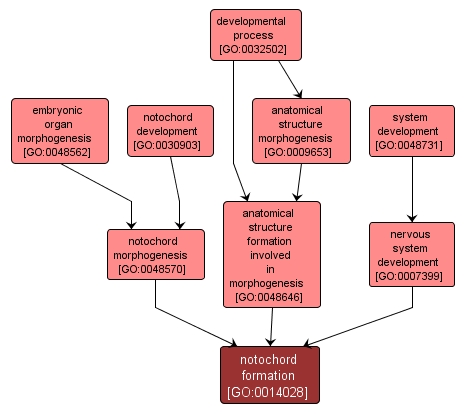| Desc: |
The formation of the notochord from the chordamesoderm. The notochord is composed of large cells packed within a firm connective tissue sheath and is found in all chordates at the ventral surface of the neural tube. In vertebrates, the notochord contributes to the vertebral column. |














